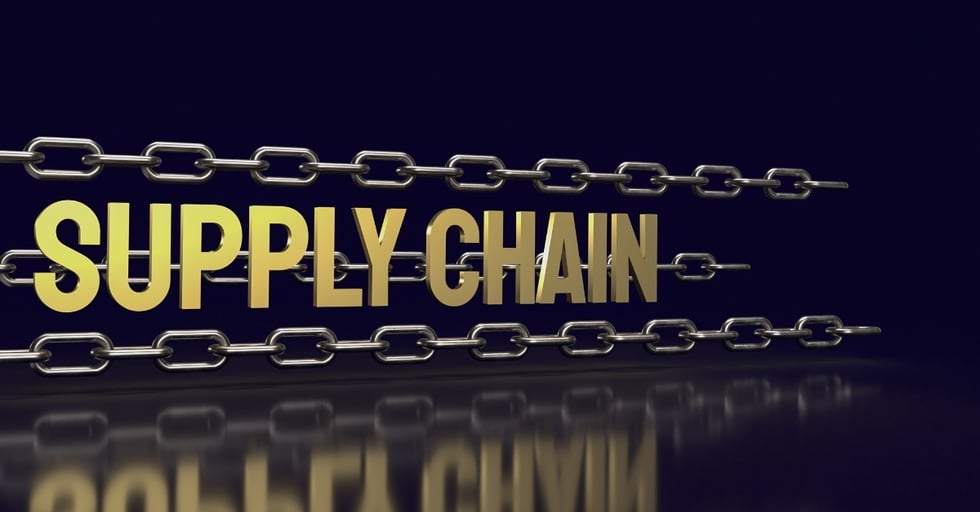How to Calculate Safety Stock (With Formulas and Real Examples)
Most bar and restaurant operators don't calculate safety stock at all. When it comes to inventory levels, they either guess, over-order, or run out. But there’s a better way—and it’s not as complicated as you think.
This guide walks you through everything you need to know:
- What safety stock actually is
- Why it matters (especially in hospitality)
- The safety stock formulas behind it (with real examples)
- How to calculate reorder points
- A free Excel calculator you can use to improve inventory optimization and ROI
What Is Safety Stock?
Safety stock = the extra inventory you keep on hand just in case something goes wrong.
Think of it like a bar’s backup stash or buffer inventory:
- A supplier’s late? No problem—you’ve got backup.
- A cocktail promo goes viral and depletes your stock faster than expected? Covered.
It’s the buffer between smooth sailing and a “we’re out of Tito’s again” moment that impacts customer satisfaction and product availability.
Want more tips on managing liquor inventory the smart way? Read this.
Why It Matters
Let’s say you normally go through 10 bottles of vodka a week, and your delivery takes 5 days to arrive.
You plan for that. But then:
- The delivery gets delayed
- You have a busier-than-normal weekend
- Your new bartender is over-pouring like it's Mardi Gras
Now you’re short. That’s where safety stock steps in—to absorb the hit so guests never notice the chaos behind the scenes. This is a classic stockout scenario.

Why Your Supply Chain Needs a Buffer
Your supply chain isn’t always predictable. A product might be on backorder, your vendor might be late, or there’s a surprise special event that wipes out your best-selling items.
Even reliable vendors can cause chaos—supplier delays, missed windows, or partial shipments all impact your ability to serve consistently.
Safety stock gives you breathing room when your supply chain stutters—and protects your guest experience in the process.
Supplier reliability plays a critical role here. The more consistent your vendor, the lower your risk of stockouts. Combine this with solid inventory planning and a well-defined inventory policy to reduce uncertainty.
A Bar-Friendly Explanation (Yes, Even the Math Part)
Think of safety stock as your “Oh sh*t” stash. When your regular ordering plan gets disrupted, this is what saves the shift.
Let’s say you go through 10 bottles of vodka per day, and your vendor takes 4–5 days to deliver. You want to protect yourself against the worst-case scenario.
The Basic Safety Stock Formula (No Spreadsheet Needed)
This version works well if your demand is fairly steady:
Safety Stock = (Maximum Daily Sales × Maximum Lead Time) − (Average Daily Sales × Average Lead Time)
Safety Stock = (Maximum Daily Sales × Maximum Lead Time) − (Average Daily Sales × Average Lead Time)
Maximum Lead Time represents the longest it could take for a delivery to arrive—use this number, not the average, to make sure you’re protected against worst-case scenarios.
Example:
- Maximum daily sales = 15 bottles
- Average daily sales = 10 bottles
- Maximum lead time = 6 days
- Average lead time = 4 days
Safety Stock = (15 × 6) − (10 × 4) = 90 − 40 = 50 bottles
Safety Stock = (15 × 6) − (10 × 4)
= 90 − 40
= 50 bottles
So you'd keep 50 bottles of vodka as your safety buffer.
This estimate accounts for demand uncertainty, lead time fluctuations, and forecast error—three major sources of stockouts. It’s a simple yet powerful form of safety stock estimation.
Cycle stock refers to the inventory you plan to use during a given period—it’s separate from your safety stock buffer. Think of cycle stock as your "normal use" quantity.
The Statistical Safety Stock Formula (For Variable Demand)
This method helps account for forecasting errors and gives you a more accurate safety stock number—especially if your POS system or inventory management software tracks detailed sales and delivery data.
If you’re using a more advanced platform like an ERP system (Enterprise Resource Planning), even better—it combines purchasing, sales, and stock data in one place.
Best use: When your demand follows a normal distribution, and you're working with real-time POS or software that can calculate the standard deviation of lead time automatically.
Safety Stock = Z × σ × √Lead Time
Safety Stock = Z × σ × √Lead Time
Where:
- Z = desired service level (e.g. 1.65 for 95%)
- σ = standard deviation of daily sales (your demand variability)
- √Lead Time = square root of the average lead time (in days)
If you’re new to standard deviation or sigma, this MIT explainer breaks it down well.
What’s a Z-Score (And Why Should You Care)?
A Z-score is just a way of saying, “How sure do I want to be that I won’t run out?”
Still fuzzy on Z-scores? Here’s a deeper dive.
Here’s a cheat sheet:

Real Bar Example: The Tipsy Gator
Let’s say you run a bar that goes through a lot of Espolon Blanco tequila. You want to keep enough on hand to avoid stockouts, but not so much that you tie up cash and shrink your profit margins.
Here’s what your numbers look like:
- Average daily sales: 12 bottles
- Standard deviation (σ): 5 bottles
- Lead time: 4 days
- Z-score for 95% service level: 1.65
Safety Stock
Safety Stock = 1.65 × 5 × √4
= 1.65 × 5 × 2
= 16.5 bottles
Safety Stock = 1.65 × 5 × √4
= 1.65 × 5 × 2
= 16.5 bottles
Round up: 17 bottles of safety stock
Don’t forget to run an ROI calculator on your safety stock decisions—especially for high-cost items like premium tequila. Keeping too much buffer can eat into your performance cycle if you’re not moving product fast enough.
Reorder Point = When to Reorder
Safety stock tells you how much backup to keep.
The reorder point tells you when to place your next order.
For the Tipsy Gator:
Reorder Point = (Average Daily Sales × Lead Time) + Safety Stock
Reorder Point = (Average Daily Sales × Lead Time) + Safety Stock
= (12 × 4) + 17
= 48 + 17
= 65 bottles
So when your inventory of Espolon drops to 65 bottles, it’s time to reorder.
You can also set a visual reorder stock screen in your point of sale system or ERP dashboard to alert you when stock hits reorder levels. This helps prevent missed sales orders and improves customer service during high-traffic hours.
Learn more about how your POS system supports reorder tracking in this article.
How to Set Safety Stock Levels by Product Type
Not every product should have the same safety stock level. Here’s a quick framework:
- Fast-moving items (vodka, citrus, beer): Keep a larger buffer (higher cycle stock)
- Slow-moving or specialty items (rare amari, ginger liqueurs): Smaller safety stock
- Perishables (fruit, dairy): Watch closely—don’t let safety stock lead to food waste
The more volatile the demand volume or the longer the delivery lead times, the higher the safety stock should be.
Tools like ABC analysis and ERP systems can help you segment your products by priority and usage rate. While tools like Greasley’s method or Heizer Render’s formula support more advanced safety stock decisions—especially when handling dependent demand or unpredictable market fluctuations.
Common Mistakes to Avoid
- Guessing instead of calculating
- Using the same safety stock for every product
- Ignoring lead time uncertainty
- Never adjusting your levels (especially seasonal demand)
- Treating safety stock as “extra” instead of “essential”
- Relying solely on past sales instead of real demand signals from ERP data

Tools and Templates for Inventory Management
If you’re already using spreadsheets—or better yet, pulling data from your POS system—calculating safety stock is easier than you think.
We built a simple Excel calculator to get you started:
📥 Download it here!
It includes:
- Input fields for average sales, demand forecasting, and lead time
- Auto-calculated safety stock and reorder point
- A built-in bar example you can model after
Better inventory management starts with better math. This tool supports smarter inventory optimization techniques.
Related Metric: Days of Inventory on Hand (DOH)
Safety stock tells you how much extra to keep. But how long will your current inventory actually last?
That’s where the Days of Inventory on Hand (DOH) formula comes in. It gives you visibility into your inventory velocity and whether you're managing stock efficiently.
Here’s the formula:
DOH = (Average Inventory ÷ Cost of Goods Sold) × 365
DOH = (Average Inventory ÷ Cost of Goods Sold) × 365
Where:
- Average Inventory = (Beginning Inventory + Ending Inventory) ÷ 2
- COGS = Cost of Goods Sold
Example:
- Average Inventory = $10,000
- Annual COGS = $208,000
DOH = (10,000 ÷ 208,000) × 365 = 17.6 days
DOH = (10,000 ÷ 208,000) × 365 = 17.6 days
That means you’ve got about 2.5 weeks’ worth of inventory on hand. Enough to stay ahead without tying up too much cash.
SOH vs DOH: What's the Difference?
- Safety Stock = Emergency buffer (insurance)
- Days on Hand (DOH) = How long your current inventory will last
- Stock on Hand (SOH) = Your current quantity available, often measured in units, not time
Example: You may have 3 bottles of amaro on hand (SOH), but if your sales rate is 1 bottle per week, that’s 3 weeks DOH.
Tracking both helps improve inventory planning and reduces stockout risks.
Want to go deeper on how data helps restaurant and bar operators improve performance? Read our analytics guide.
Final Take
You don’t need to be a spreadsheet expert to run a smarter, more stable operation.
But you do need to stop guessing.
A few minutes spent calculating safety stock now can save you from panic orders, 86’d products, and disappointed guests later.
Want help applying this to your bar?
Book a free session with one of our inventory experts and get tailored advice for your venue.
Schedule your appointment here.
